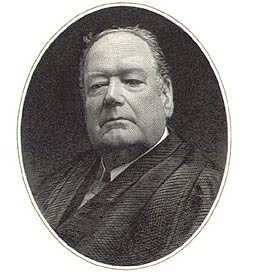 |
 |
| Chief Justice Edward White |
| White Court: |
| Biography: |
| Major Cases: Hammer v. Dagenhart 1918 Schenck v. United States 1919 (Epstein, 2001) |
| 9th Chief Justice of the United States Supreme Court |
| Born:November 3, 1845 Died: May 19, 1921 Education: Jesuit College in New Orleans Georgetown College aka Georgetown University 1868 admitted to the bar Employment: 1861-1863 Lieutenant in the Confederate Army 1868-1879 private practice in New Orleans, Louisiana 1874-1879 member of the Louisiana State Senate 1879-1880 Associate Justice in the Louisiana State Supreme Court 1880-1891 private practice and sugar planter in New Orleans, Louisiana 1891-1893 United States Senator from Louisiana 1894-1910 appointed Justice to the United States Supreme Court by President Cleveland 1910-1921 appointed Chief Justice to the United States Supreme Court by President Taft 1921 died in office (Virtualology, 2002) |
| Chief Justice Edward White was part of the conservative Court Era that went from 1889-1937. President Taft appointed White when Taft had promised to appoint Charles Hughes. Taft expected that with the appointment would balance the Court�s conservative nature. Under the Fuller Court things had been very ridge because of Plessy v. Ferguson but White was able to settle that when he got in the office. Chief Justice White was the first justice to move out of the capital building and into the newly build Supreme Court building that President Taft had ordered the construction of. White didn�t want to move into the new building he believed that it would ruin tradition if they left. Taft won the argument and White moved.(Schwartz, 1987) Hammer v. Dagenhart was the only major court case that White presided over. It wanted to create a federal ban on interstate sales of goods that were produced by children.(Glendon, 1999) It also stated that the Child Labor Law of 1916 was unconstitutional. This case limited the amount of hours that people under 18 could work and what time they were allowed to work. It is a case that followed us to 2002. White didn�t do anything extraordinary compared to Chief Justice Marshall and Chief Justice Warren but he was able to take a Court that was falling apart and keep it together. White helped save the face of the Supreme Court after Fuller had shamed it. (Schwartz, 1987) |